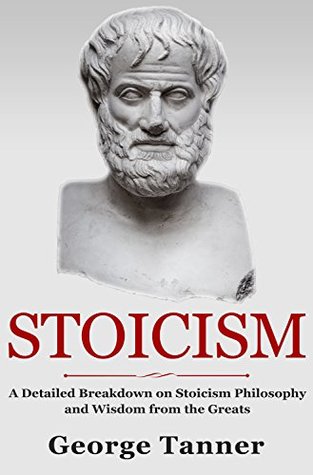Kindle Notes & Highlights
Read between
November 18 - November 22, 2018
Stoic arguments may be classified in several ways, first into valid and invalid arguments. For the Stoics, an argument is valid when the conditional (if-then) has the conjunction of its premises as its antecedent and the conclusion as its consequence, and that consequence is evaluated “true.”
Next, a valid argument is either true or not true. In a true argument, both the premises and the conclusion are evaluated true.
True valid arguments may be demonstrative or not demonstrative. Demonstrative arguments show something new or not-evident from premises that are already recognized to be the case or that are evident.
If an argument does not yield a novel conclusion, then it is not demonstrative. The Stoics also recognize undemonstrated arguments, which purport to yield new information but have not yet been proven.
Demonstrated true valid arguments may proceed through memory and belief alone toward their conclusion or may proceed through memory and belief and discovery.
Undemonstrated arguments have two forms, those which may be demonstrated in time as mentioned above and those which are non-temporal. Those undemonstrated arguments that are non-temporal are referred to as “inference schemata.” There are five such non-temporal undemonstrated arguments into whose forms all other true and valid arguments in Stoic logic fall.
The first non-temporal undemonstrated is today known as modus ponendo ponens. It is the form of argument we have, to this point, been using in our examples. If p, then q; p; therefore, q. As we’ve seen, this schemata has a conditional and its antecedent as premises, followed by the consequent of the conditional as its conclusion.
The second schemata is today known as modus tollendo tollens. Its form is as follows: If p, then q; not q; therefore, not-p. For this schemata, the conditional and the contradiction of its consequence as premises. From that, the contradiction of the antecedent follows as the conclusion. I will provide a brief example. 1) If I am going to the car wash, then my car will be cleaned. 2) My car will not be cleaned (or not-my car will be cleaned. 2) Therefore, I am not going to the car wash (or not-I am going to the car wash).
The third schemata is nameless, but it should nonetheless be familiar. Its form is: Not p and q; p; therefore, not-q. We may phrase this as “not both” p and q. So, for example, 1) Not both x is good and x is evil. 2) x is good. 3) Therefore, not x is evil. In this schemata a negative conjunction is the premise along with one of its conjuncts (so p and q, and p respectively in this case). The necessary conclusion, then, is the contradiction of the remaining conjunct.
Schemata four is today called modus ponendo tollens. Its form is as follows: Either p or q; p; therefore, not-q. For example, 1) Either I will go to college or I will work in my parents’ bakery. 2) I will work in my parents’ bakery. 3) Therefore, I will not go to college (or not-I will go to college). In this schemata a disjunction and one of its disjuncts are premises. The conclusion then is the contradiction of the remaining disjunct.
Finally, schemata five is today known as modus tollendo ponens. Either p or q; not-q; therefore, p. For example, 1) Either I will go to college or I will work in my parents’ bakery. 2) I will not work in my parents’ bakery (or not-I will work in my parents’ bakery). 3) Therefore, I will go to college. In this schemata the disjunct and the contradiction of one of its disjuncts are premises. It follows, then, that the other disjunct is the conclusion.
Cosmology and Theology in Stoicism
The “all” for the Stoics has the character of a sphere. This great copula encloses everything that is, and in it all forces, inward and outward, are balanced. Stoicism, taken as a whole, is meant to mirror this balance; it is meant to enclose and relate all aspects of conscious experience. To that extent, Stoicism includes both reason and logic and the natural sciences on the one hand, and faith on the other. These two sides—I’ll call them reason and faith for brevity, though I don’t mean to imply that they are really opposed—are united by and in cosmology for the Stoics. In Stoic cosmology,
...more
There are two sides to Divine Fire, the passive and active principles. The passive principle is matter without purpose. We might think of this as non-living objects, though they are, at best, the outward manifestations of this principle.
The active principle may be thought of as the organizing principle or the law of attraction. It is what causes the passive principle to manifest as all those things in the universe which we recognize.
Stoicism and Psychology
One common error is the overgeneralization. The core of this error is a kind of hyperbole. When some negative event happens, or some perceived personality or behavioral defect appears, the person experiencing it tends to think that it happens all the time, or that the flaw is in some way essential to them as a person.
Another error is in the attribution of blame. In some cases, one might take any criticism or negative remark as a comment about their own worth. Alternately, in the same vein, accidents of fortune or mistakes others have made are personalized.
The other half of this error is taking too little blame or blaming others.
Black and white thinking is a third kind of error referred to in the literature. This is another way we might exaggerate a situation, good or bad.
A common error in our thinking, related to over generalizing, is jumping to conclusions. Is there sufficient evidence for me to believe something about the future?


